Students Share Summer Research Projects at Symposium
By Tom PorterStudents representing a variety of disciplines gathered on the Quad last Friday to showcase a range of information-packed posters highlighting their summer research projects.
Every October, at the start of Family Weekend, Bowdoin holds its annual President’s Summer Research Symposium to highlight faculty-advised student work that spans the liberal arts curriculum.
From Soviet pop culture to Sophocles, from cancer research in mice to collaborative behavior among humans, a wealth of academic research was on display as almost 200 students presented their projects to curious parents, relatives, staff, and faculty. The event preceded the traditional Sarah and James Bowdoin Day ceremony to honor academic excellence.
Enjoy this slideshow of images from photographer Michele Stapleton.
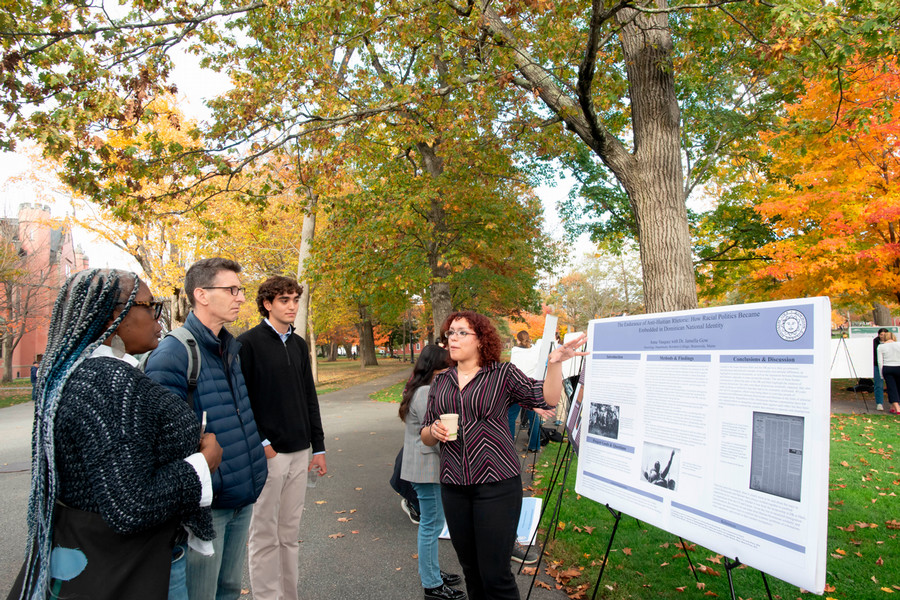
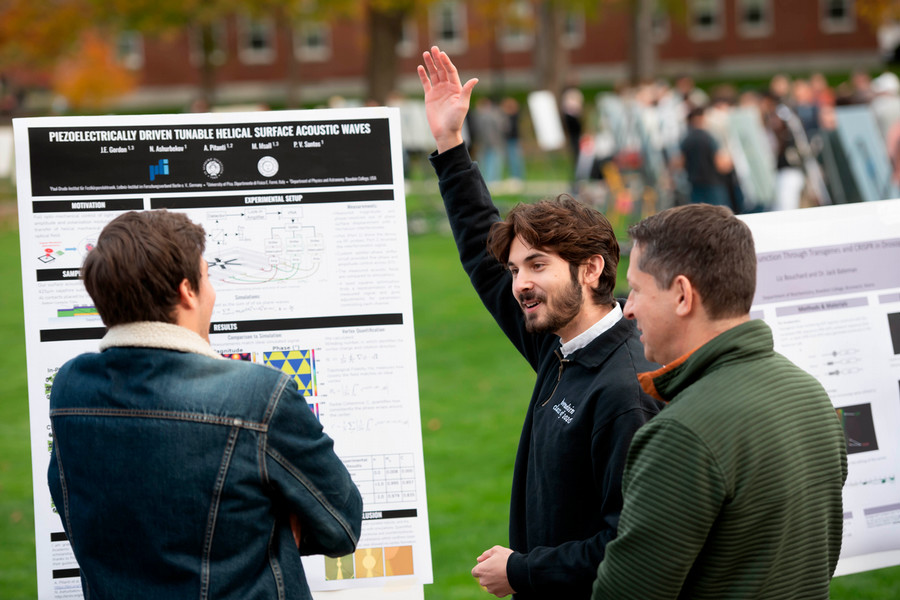
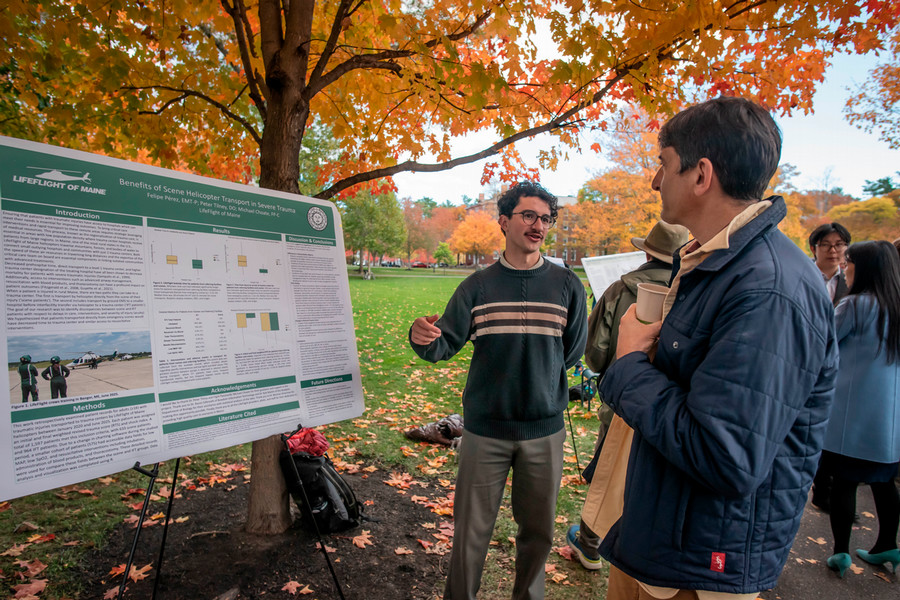
Here are brief summaries of some of the students’ work:
Erik Infante ’26.
Investigating the Role of Macrophages on Proliferation in a Mouse Model of Prostate Cancer.
- Worked as part of a team at George Washington University’s Cancer Center.
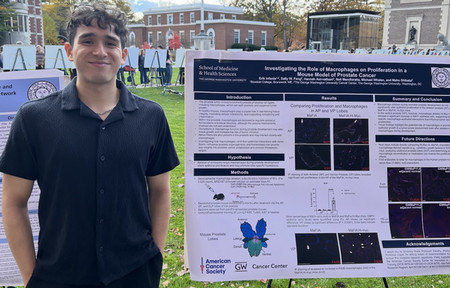
Infante’s work involved looking at the important role played by blood cells called macrophages and how they can both promote and suppress the growth of cancer cells in mice. It was exciting to be involved in this research, said the biochemistry major, because it’s at the forefront of the fight against prostate cancer, which is one of the leading causes of cancer deaths among men today.
“It's a huge number and the problem is we don't know how this is happening. We don't understand the prostate well enough to be able to conclude how this is spreading and growing, so our lab is really focused on developing tools and techniques to be able to study it further.” Infante plans to return to the GW Cancer Center after graduation to pursue a PhD in chemical biology.
Zachery Ozols ’28.
Modeling and Analyzing a Fire Plume in a Crosswind.
- Advisor: Alec Peterson, postdoctoral researcher at UC Irvine and former visiting assistant professor of earth and oceanographic science and physics at Bowdoin College.
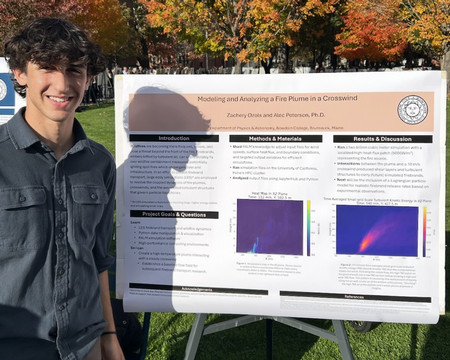
With wildfires becoming more frequent and severe throughout the world, Ozols decided to look at the behavior of firebrands—dangerous burning embers swept aloft by turbulent air. These can form into columns of intense heat known as fire plumes, potentially causing spot fires to ignite and spread across a wide area. A lot of effort currently goes into trying to model the the turbulent structures of these fire plumes, especially when they come into contact with crosswinds, and Ozols wanted to join in with that research effort.
“I’ve always enjoyed studying physics,” said Ozols, “but I’m particularly interested in how it can be applied.” For the project, Ozols had to learn a range of new skills, including simulation software programs, coding, and how to operate in a high-performance computing (HPC) environment. It was not just a question of learning these new skills, he said, but also of figuring out how to deploy them for the task at hand. “It took a lot of time,” he said, “but it was worth it.”
Chloë Sheahan ’26. Exploring Maine’s Offshore Wind Initiative.
- Denning Fellowship, supervised by the Maine Department of Energy Resources (formerly known as the Governor’s Energy Office).
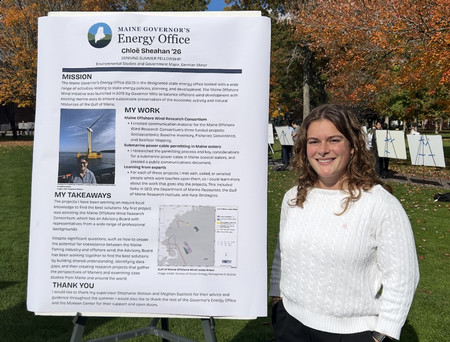
Sheahan’s summer project involved a deep dive into the world of Maine’s offshore wind initiative, bringing her into contact with many of the industry’s key stakeholders. The initiative was launched in 2019 by Governor Mills, she explained, to try to balance offshore wind development with existing marine uses while protecting the natural resources of the Gulf of Maine.
One of her jobs was working with the Maine Offshore Wind Research Consortium, an initiative started in 2021 to better understand the local and regional impact that floating wind power projects could have. One of the key areas explored by Sheahan was how the fishing industry might coexist with offshore wind farms. “I also did research on submarine cable permitting, looking at how we would get the energy from the substations, which can be up to fifty miles offshore,” added the environment studies and government major.
The federal government paused all offshore wind development earlier this year, so, for now at least, Maine’s efforts in this area are on hold. Nevertheless, said Sheahan, it’s unlikely to be a subject that will go away, and she is continuing her research on the industry through her honors project.